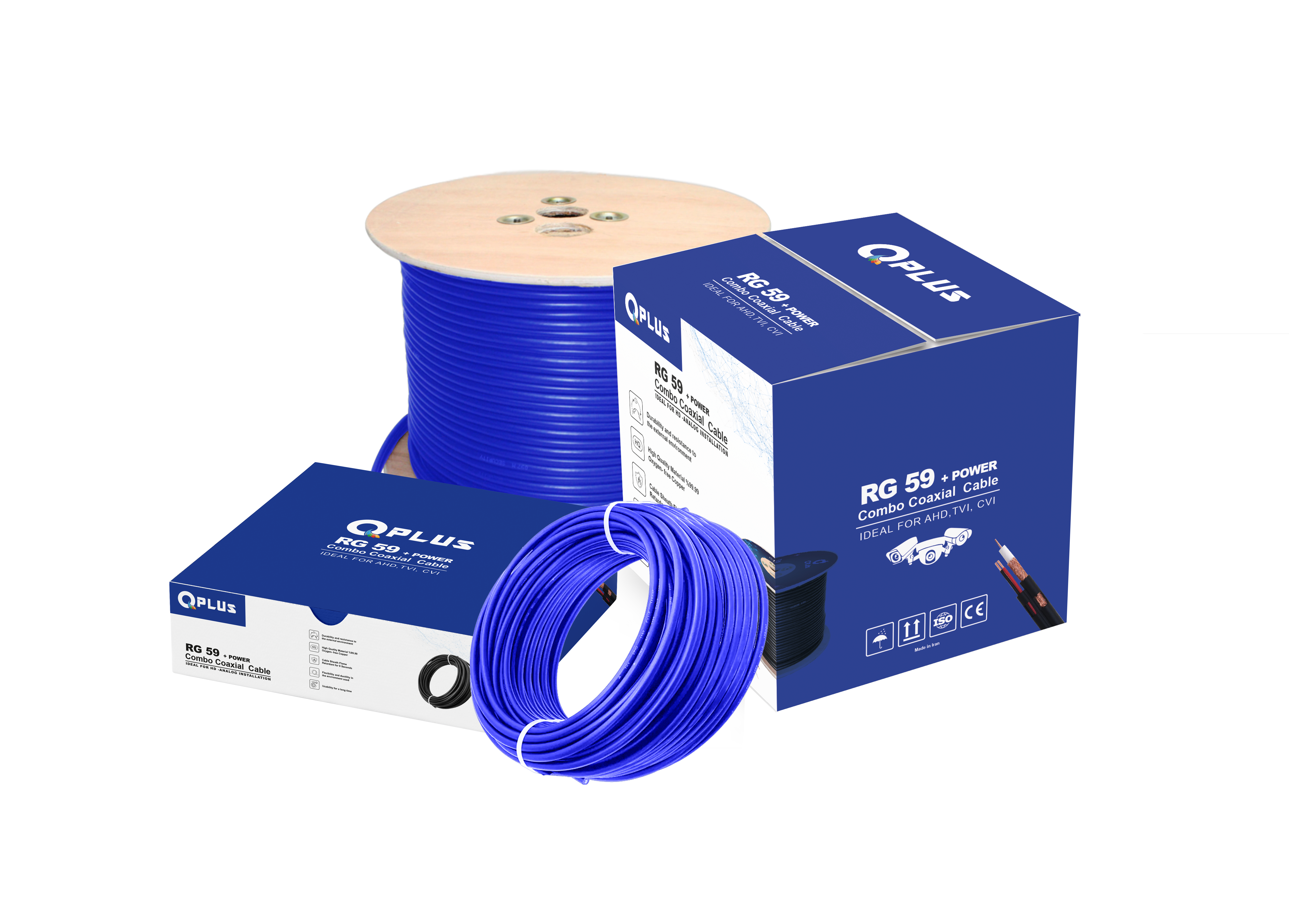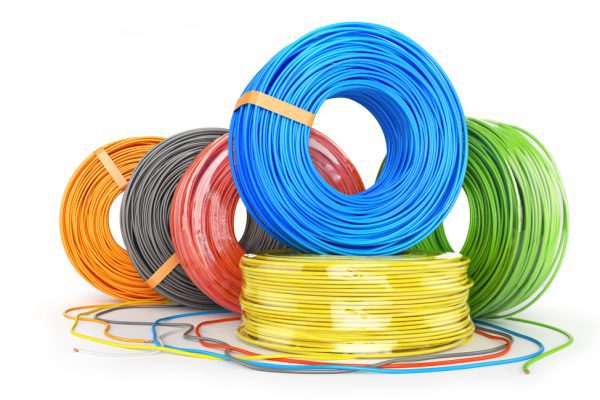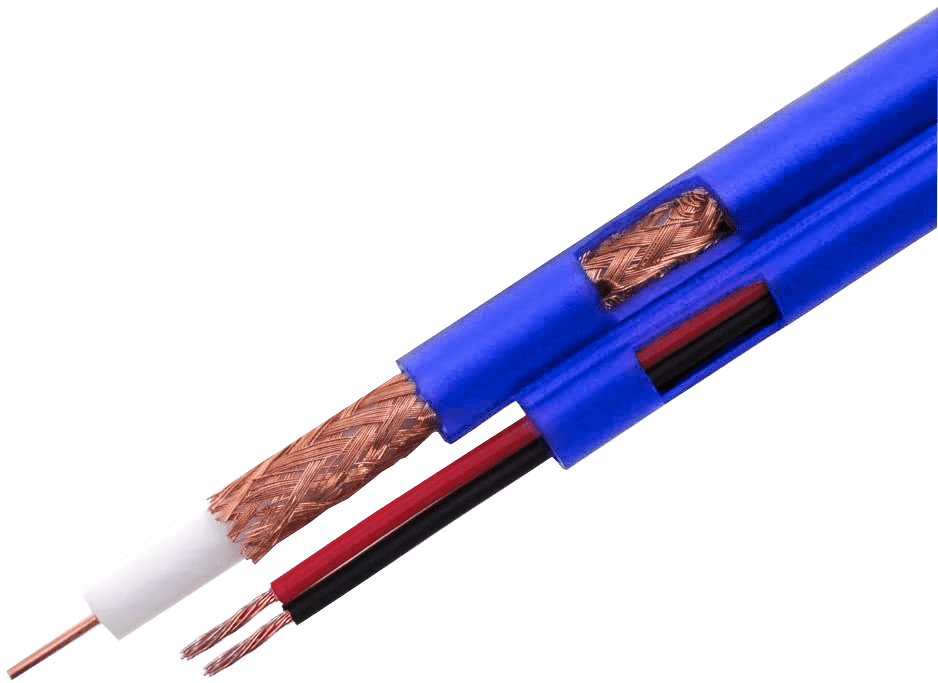For CCTV camera projects, depending on the project type, various types of coaxial and network cables are used, and for larger projects, fiber optic cables are sometimes used.
In common systems, a power cable is also used to supply the power needed for the camera.
If analog cameras or HD cameras are installed, coaxial cables are used; if network cameras are installed, network cables are used.
Coaxial Cable (Coaxial) for CCTV Cameras
Coaxial Cable, which in Persian means "same-axis cable," was previously known as an antenna cable. In the CCTV industry, this commonly used cable is commercially branded as RG-59.
The general structure of this cable consists of:
A central copper wire strand
Multiple thinner twisted strands (called shielding, which eliminates interference)
All separated by insulation
Entirely wrapped in a PVC jacket

The core diameter of this cable comes in various cross-sections (0.59mm, 0.6mm, 0.7mm, 0.8mm, 1.1mm, 1.3mm, etc.) for different applications, while the shield typically contains between 64 to 144 strands (96, 128, or 144 strands).
Here's a crucial tip for CCTV installers: A flexible coaxial cable variant exists in the market that's particularly suitable for elevator cab installations. Unlike standard types, this cable's core features stranded twisted wires, providing exceptional resistance to breakage and fatigue from repeated bending.
It's worth noting that the market also offers cables with aluminum shielding or aluminum cores (sometimes copper-clad aluminum), commonly known as "Copper-Clad Aluminum (CCA)" cables.
The video transmission distance over coaxial cable can sometimes exceed 300 meters, depending on the material, quality grade, core diameter, and number of shield strands.
Currently, the market offers composite cables that combine coaxial and power cables bonded together, which are very popular due to their convenience during project installation.
CCTV Network Cables
Network Cable or TP (Twisted Pair), known in the market as CAT and RJ45, are used in IP CCTV projects. The basic structure of this cable type consists of 4 twisted pairs separated by a dielectric divider. In its simplest form, these pairs are insulated with PVC, or shielded with foil/shielding (or both) for electromagnetic protection.
Network cables are divided into different categories or classifications based on factors such as data transfer speed, operating frequency, alloy and core diameter, the number of twists, insulation type, and shield type. These include Cat5, Cat5e, Cat6, Cat7, and so on.
In the market, we encounter terms related to network cables that often pertain to their shield type, and it's beneficial to also mention them. These terms are usually represented by abbreviations before and after a slash, indicating the overall shielding and the shielding on individual pairs, respectively.
UTP: Stands for Unshielded Twisted Pair, meaning twisted pairs without shielding.
STPstands for Shielded Twisted Pair, in which four twisted pairs are insulated and shielded.
FTP: Stands for Foiled Twisted Pair, consisting of four twisted pairs insulated with foil shielding.
SFTP: Shielded Foiled Twisted Pair, four twisted pairs with shield and foil insulation.
Other types of network cables also exist, such as those where each twisted pair is individually foiled, and the overall bundle is both shielded and foiled (known as SF/FTP). These are available for specific uses but are not commonly used in the CCTV industry, so we will not discuss them further.
Typically, network cable is used for transmitting digital information and up to a distance of 100 meters.
Click here to view types of CCTV camera cables.
Free Consultation
For further consultation and guidance, please contact our experts.
Phone number: +9821.66712000 ext. 105, 106, 107, 108
Iran Notrika Collection




